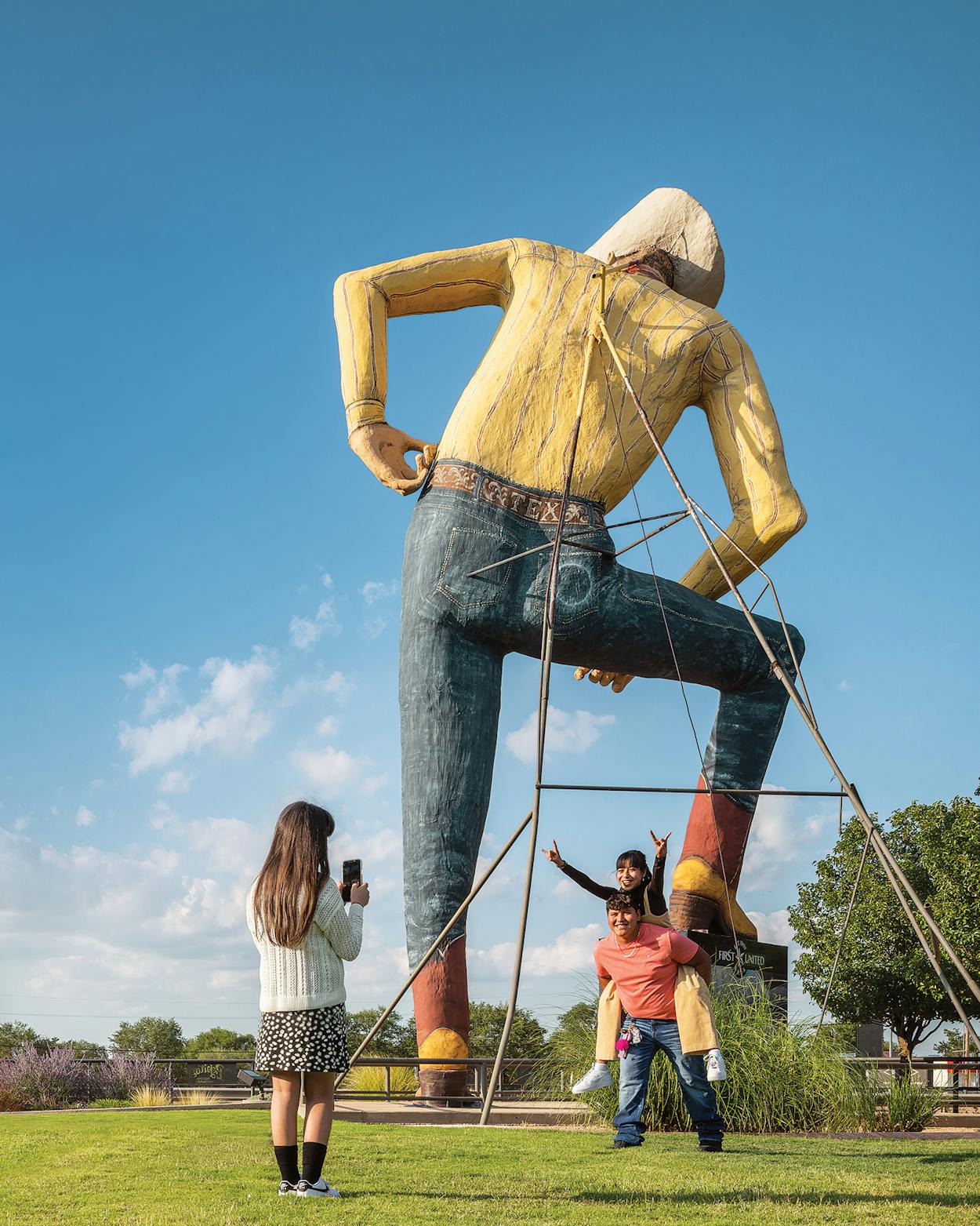On the road, Texans learn to bend time. In other parts of the world, folks don’t consider four hours to be a “short drive.” But here, you can sit in the car for four hours and never get out of North Texas—and that’s if you don’t hit traffic. Four hours is a third of the way from Beaumont to El Paso or from Amarillo to South Padre Island. Four hours is how long it takes just to traverse the Panhandle. It’s technically short enough to qualify as a day trip—pushing it, yes, but doable, because eight hours in a car isn’t that crazy for a Texan. Frankly, we just love to drive, and thanks to the nightmare that is pandemic-era air travel, the past few years have given us even more reason to hit the highways.
Now, that doesn’t mean we don’t like to take a break every few hours or so. Indeed, one of our most cherished institutions—Buc-ee’s—built its reputation on being a swell place to get out, stretch your legs, fill your belly, and empty your bladder. But there’s a whole world of beloved stopping points beyond that beaver. Pagan monuments stand frozen on the sides of our highways, while just off exit ramps, nondescript buildings house treasures—often of the living, breathing, and sometimes hissing variety—from all over the world. We’re also quite fond of making small things, such as birds and seashells, inexplicably ginormous, and we have not one, but two of our state’s founders immortalized in statues that stand more than sixty feet tall.
To see Texas unfold through a bug-splattered windshield is to see her at her finest. A drive from Llano to Fort Stockton can reveal thousands of millions of years of erosion and geological shift in just four hours of travel. Time transforms in several ways over the course of a Texan road trip. And at the end of it all, you might get to admire a giant fiberglass roadrunner that may or may not be wearing a Santa hat, depending on the month.
Frequent Texas Monthly contributor Jeff Wilson has now turned his camera on some of our loveliest roadside oddities. His work captures not just the wonder of these statues, installations, and attractions, but also the experience of approaching them many miles into a long journey, and of leaving them behind with hours still to go. In Texas, every roadside stop is a little oasis, a welcome break before getting back in the car to finish the “short drive” that spans scores of counties, multiple terrains, and maybe even a few thousand millennia.
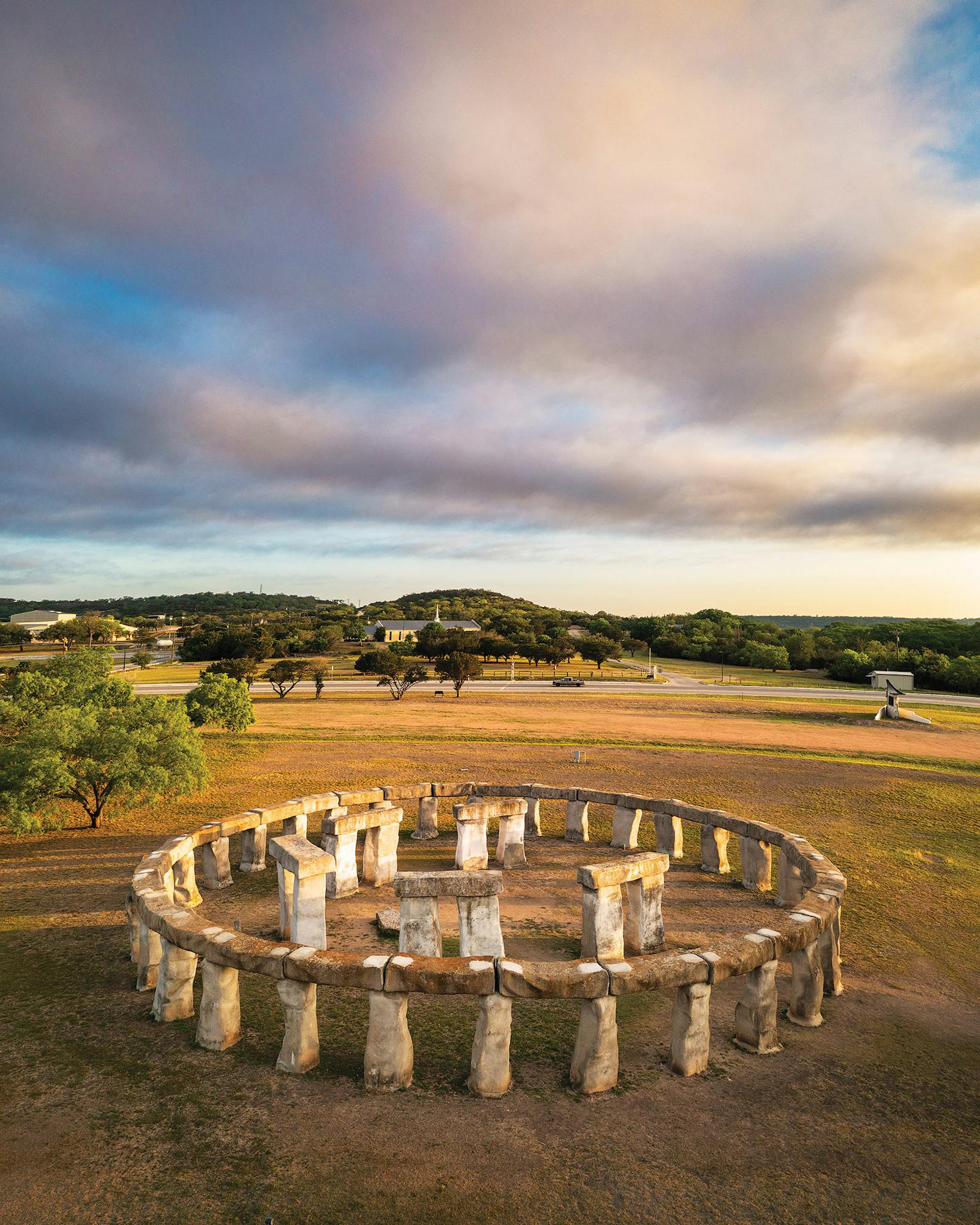
Ingram
As far as we know, there were no druids spellcasting on the Balcones Escarpment in 2500 BC, and yet today, right smack in the middle of Kerr County stands a second Stonehenge. This one’s origins are significantly less enigmatic than its predecessor’s. It was constructed from limestone and concrete by artists Al Shepperd and Doug Hill in the early nineties and, with a modesty uncharacteristic of most Texans, was built two-thirds the size of the original. The replica stayed on Shepperd’s property in Hunt until 2010, when it was moved to its current location. The migration was carried out by trucks and heavy machinery, not the giants and aliens who are said to have transported the stones used in the original.

Los Fresnos
If you’re in a rush to get to Padre Island, you might speed past Bobz World, a shop just west of the coast in Los Fresnos. Such a mistake would be understandable—the area is anything but short on large, plaster marine-life sculptures. But the quantity and diversity of subjects at Bobz is unmatched. There are two giant conch shells, several dinosaurs, and some sharks out front, plus a gator, gorilla, volcano, and woolly mammoth in the back. Entering the facility requires visitors to walk through the jaws of a humongous Jaws. Bobz also boasts miniature golf, an arcade, and more hot-glued shell art than anyone could ever want. Who needs the beach?
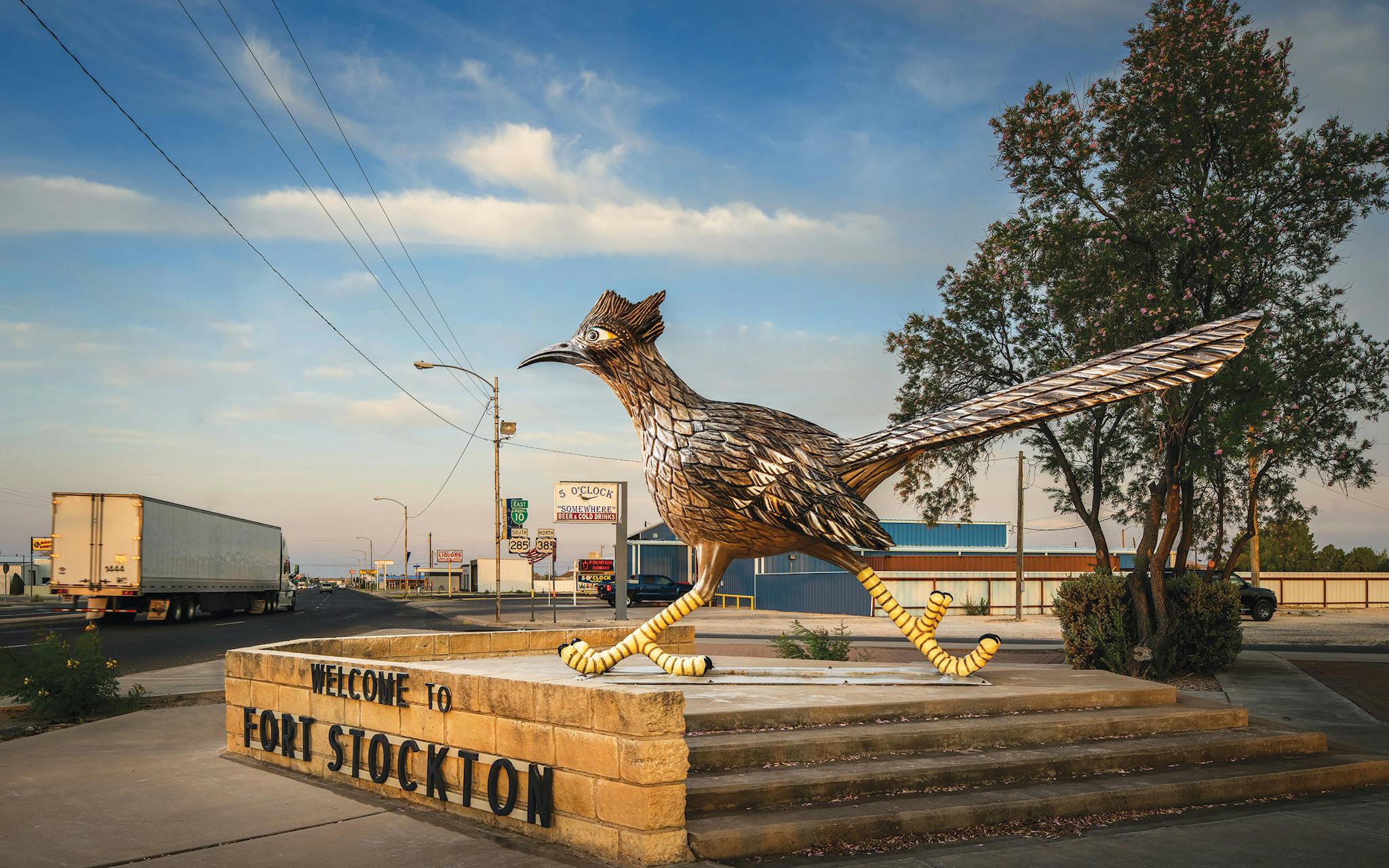
Fort Stockton
Compared with some of the other attractions featured here, this eleven-foot-tall roadrunner is rather petite. But as roadrunners go, he’s huge. Frozen, seemingly mid-sprint, right in the heart of Fort Stockton, this 42-year-old statue points northeast, toward the sunrise, and he welcomes each new day the same way he greets visitors to town. Although he is only the second-largest roadrunner statue in America (there’s a taller one in New Mexico), Pete’s speediness is second to none.
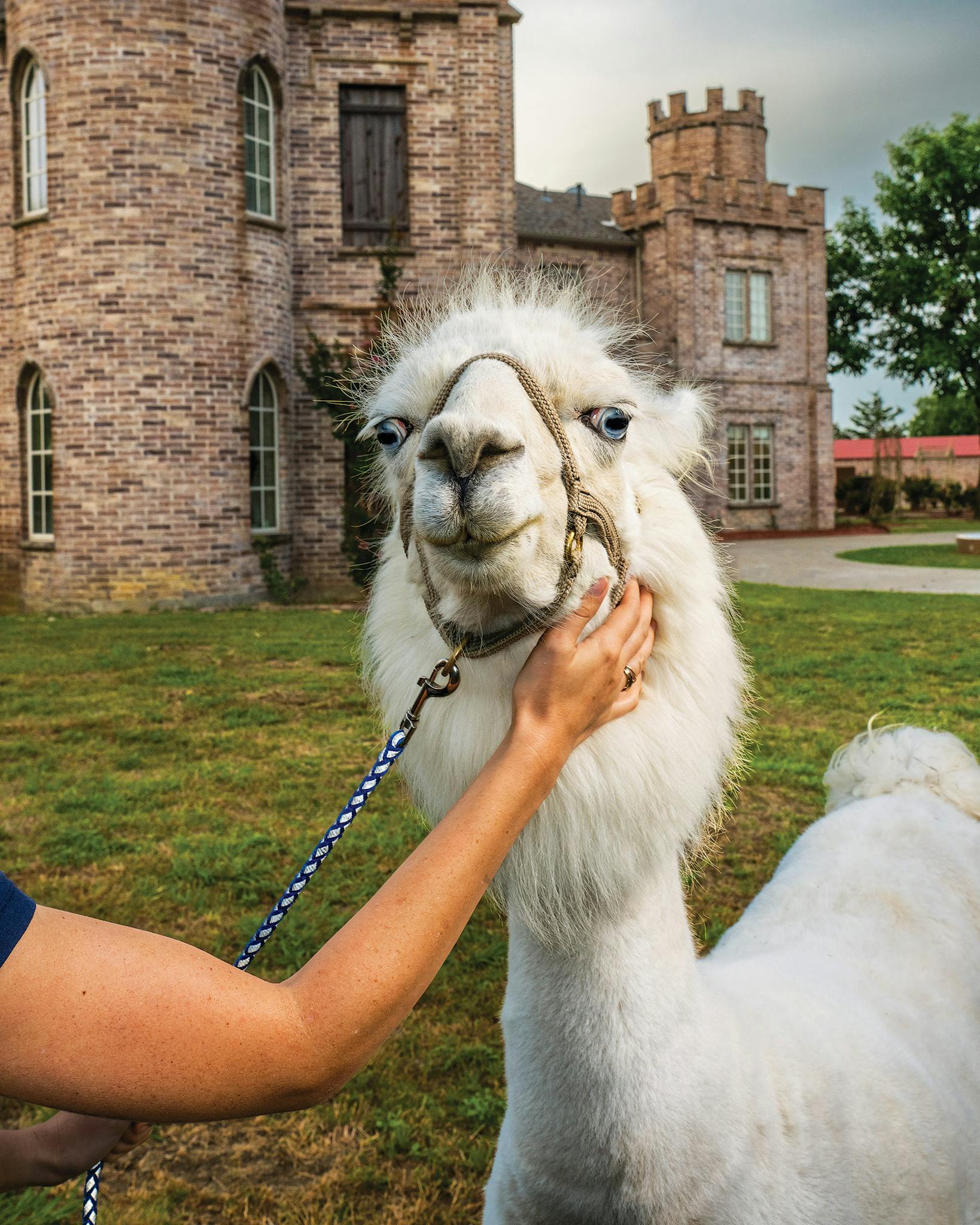
Royse City
The exact location of ShangriLlama is as mysterious as the interior lives of the llamas that dwell there. You have to pay for your ticket before the proprietors tell you where you’re going, and then you must wind your way along dirt roads in rural Rockwall County until you spot the surprisingly regal castle that is the home to six “royal” llamas. Weather permitting, you can take a walk with the likes of King Dalai Llama and Sir Lance-O-Llama, or sit in on a one-hour Llama Llesson. You’ll learn lots, including the lesson that llamas simply will not cuddle with you, no matter how much you want them to.
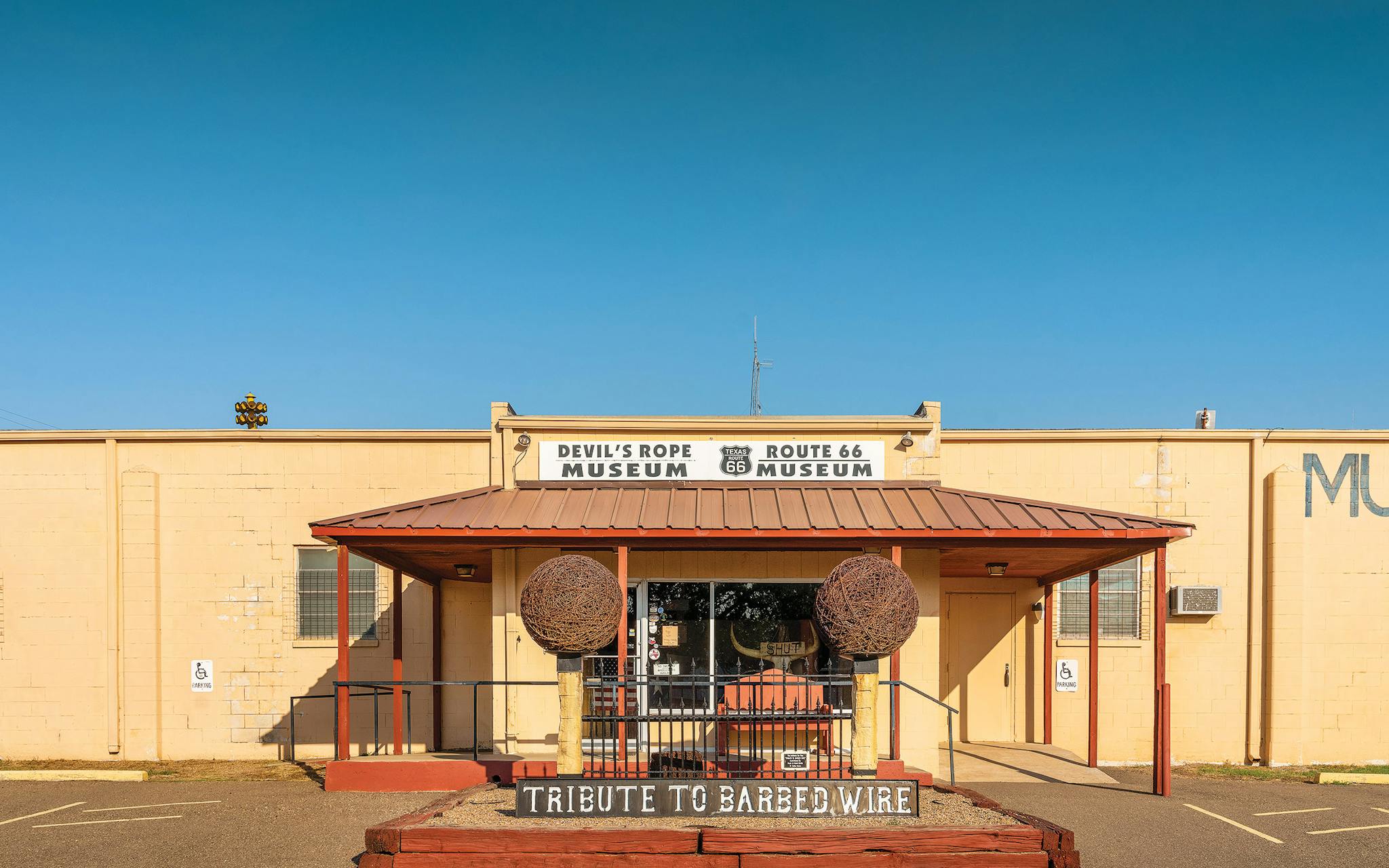
Barbed-wire, the late nineteenth-century invention that is said to have killed the open range, has enough historical relevance to warrant a museum, and this kitschy little outpost does not disappoint. Sitting in a former brassiere factory right off the legendary Route 66, the museum offers a crash course in that transformative steel rope, including examples of the hundreds and hundreds of patents that exist for specific barbs (with names like “three point sheet metal star barb,” “twisted key barb,” and “half round stick tight barb”). Creative types will appreciate the barbed-wire scorpion sculpture (or its cuddlier cousin, a bunny), while history buffs can peruse the wall display of “100 Years of Cowboy Tools.” There’s even a life-size cartoon feller named Bob Wore, with whom patrons are encouraged to take selfies after an afternoon of nerding out about poky knots.
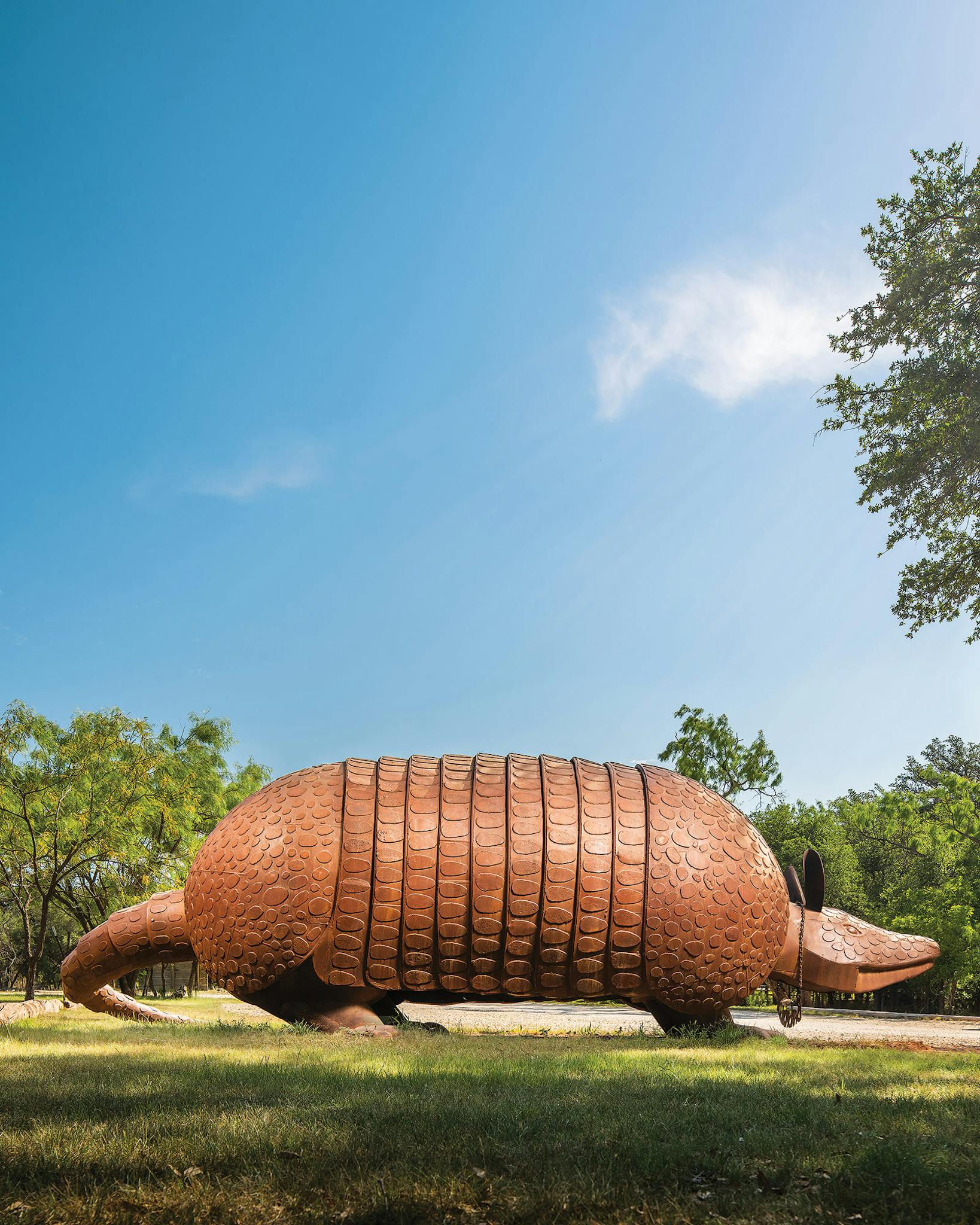
Buffalo Gap
To find Perini Ranch Steakhouse, the home of a thirty-foot-long metal armadillo, wind your way through Buffalo Gap, a delightfully wooded enclave on the border between West Texas and the Edwards Plateau, right where the landscape starts to flatten and dry out. Built in Texas by an unknown sculptor and purchased by an adventurous Yankee, Barbadilla lived on a Vermont farm for half a decade before returning to her roots in 2009. She now holds court beside the parking lot of one of the state’s finest meat palaces, and she’s adorned with a custom nameplate necklace, not unlike the one Carrie Bradshaw wore in Sex and the City, which is how you know Perini Ranch is a real classy joint.
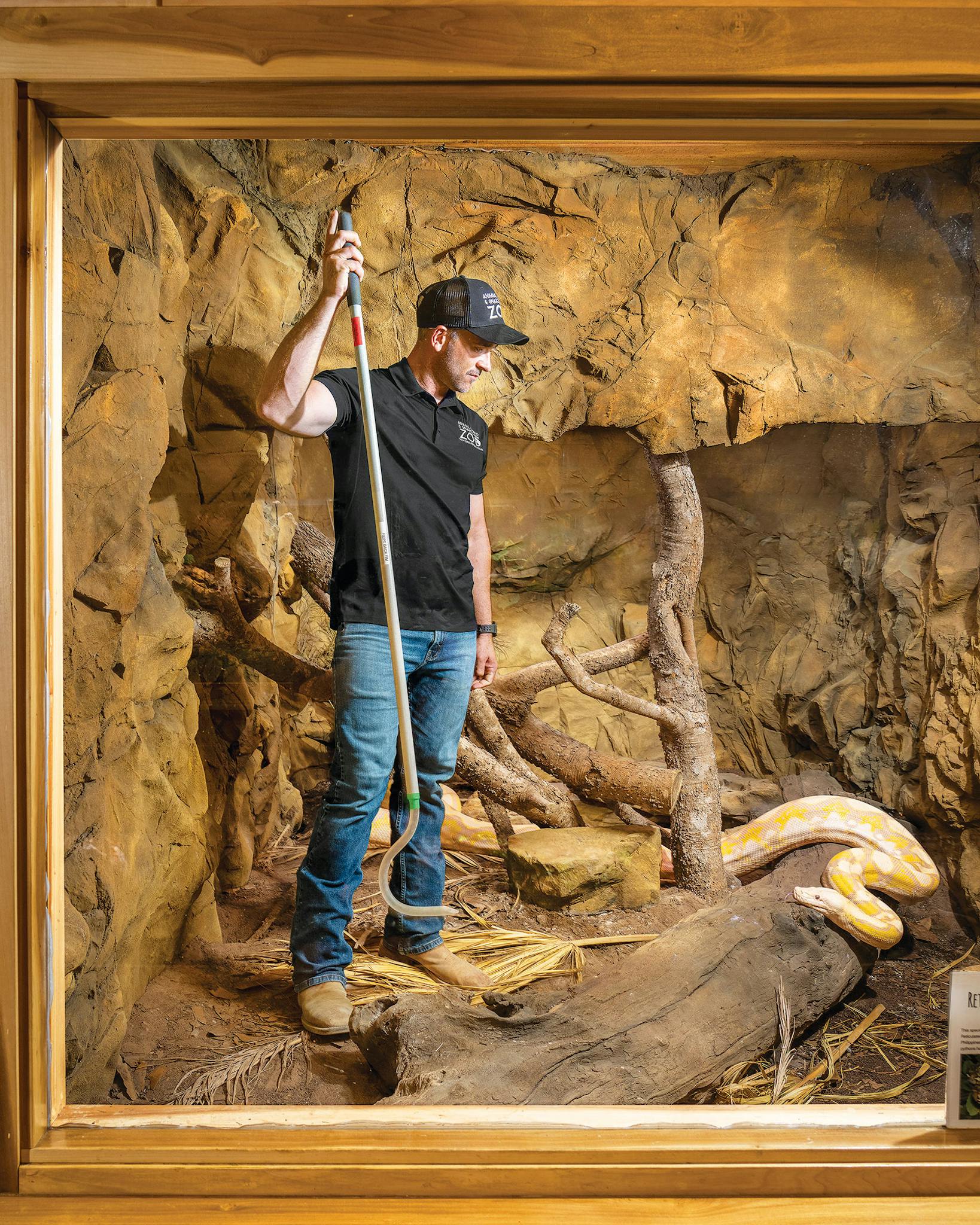
New Braunfels
The Snake Farm has been a fixture along Interstate 35 since 1967. Over the years, its oversized red-and-black-lettered billboard became notorious enough for Ray Wylie Hubbard to name a song after it with the lyrics “ ‘Snake Farm,’ it just sounds nasty” in the chorus. New owners bought the facility in 2007, the year after Hubbard’s album Snake Farm came out, and they soon revamped the place. These days, it’s a surprisingly abundant zoo with more than five hundred species on display, including bison, camels, otters, and zebras, in addition to all those snakes. So many snakes.
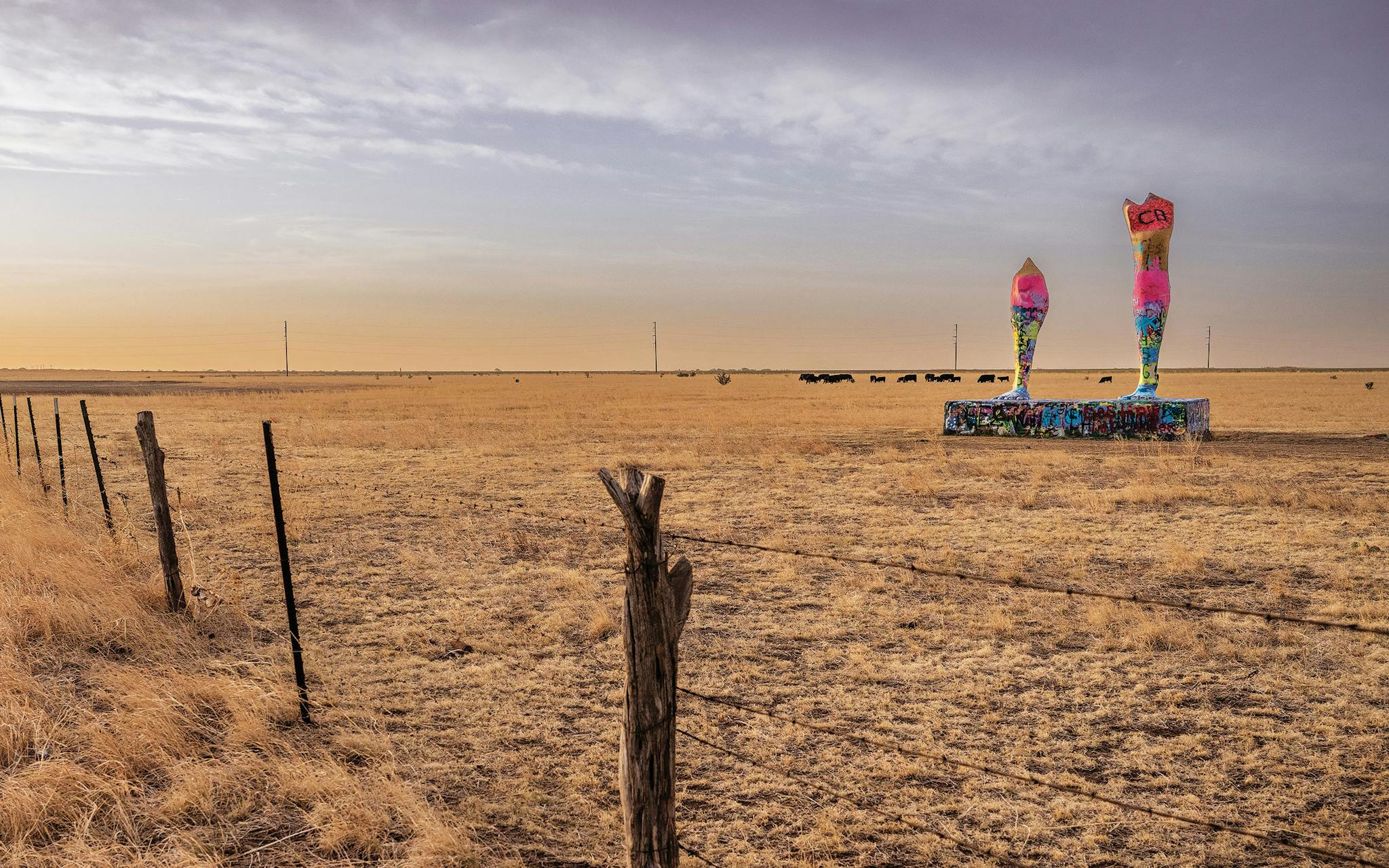
Amarillo
If the world-famous Cadillac Ranch is any indication, folks sure like to spray-paint things up in Amarillo. Just about ten miles south of that beloved installation, you’ll find a similarly decorated pair of giant’s legs rising up out of the Llano Estacado. Resembling the ruins of an ancient society, these gams are in fact a 1996 creation of the legendary Panhandle sculptor Lightnin’ McDuff. According to an utterly fanciful historical marker, the full statue was destroyed in anger by a Lubbock football team that had recently lost to a squad from Amarillo.
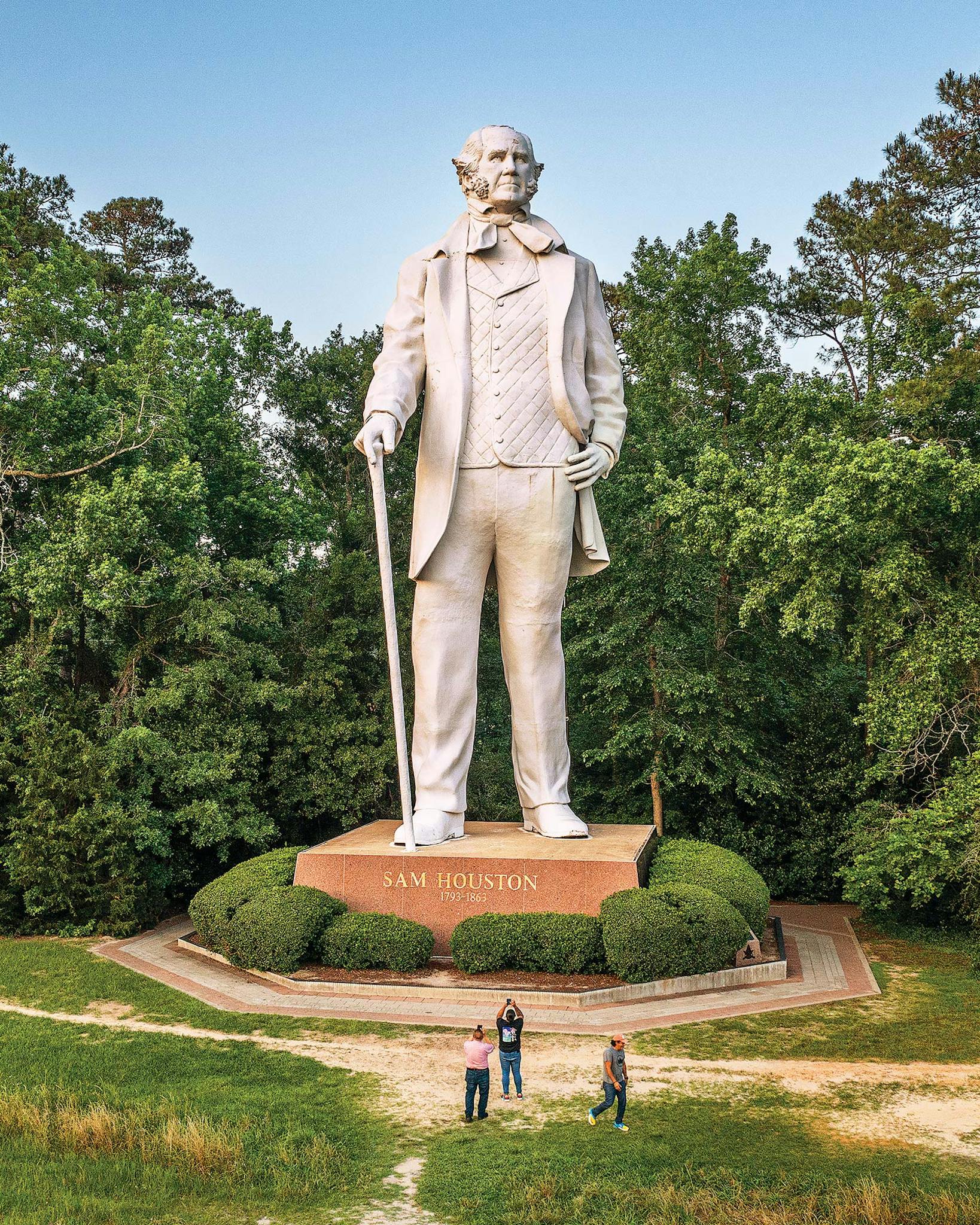
Ah, the Sam Houston statue, the rare Huntsville landmark that isn’t prison-related. Standing at an impressive 67 feet tall, this behemoth is one of a pair of dueling concrete giants carved by Huntsville-born, French-trained sculptor David Adickes. Two hours south, in Angleton, stands another Adickes creation, a 76-foot-tall Stephen F. Austin—depending on how it’s measured. There’s always some argument about which one’s taller (Angleton factors in a roughly twelve-foot base when advertising its statue, which Huntsville doesn’t), making for a refreshingly low-stakes version of the historical debate over which founding father looms largest in the state’s history.
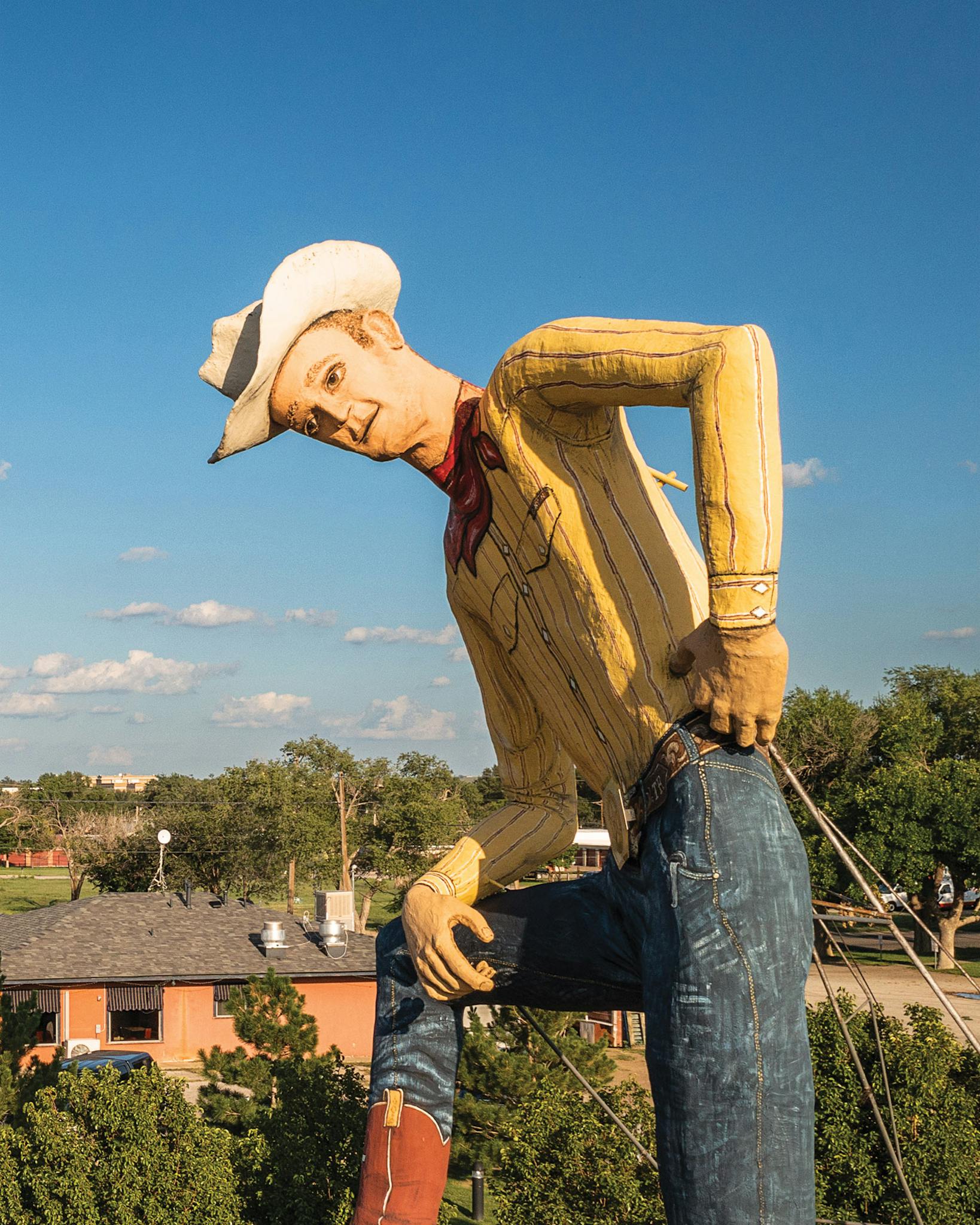
Canyon
Slouching at 47 feet as he peers down Highway 60, Tex Randall became the tallest Texan when a high school shop teacher assembled him in 1959. Though he now pales in comparison to the likes of Fair Park’s Big Tex and Huntsville’s Sam Houston, one wonders if he might give them a run for their money were he standing up straight. He was originally an adornment for a Western shop, meant to beckon customers from the road. The store went out of business years ago and Tex nearly fell to pieces before being refurbished in 2016. Now he stands alone, supported by metal bars and a billboard for First United Bank celebrating the “Spirit of West Texas,” upon which Tex rests one boot. He’s just one of many poignant reminders of a bygone era, when people known as shoppers bought items in establishments called stores.
This article originally appeared in the October 2022 issue of Texas Monthly with the headline “Pull Over!” Subscribe today.
